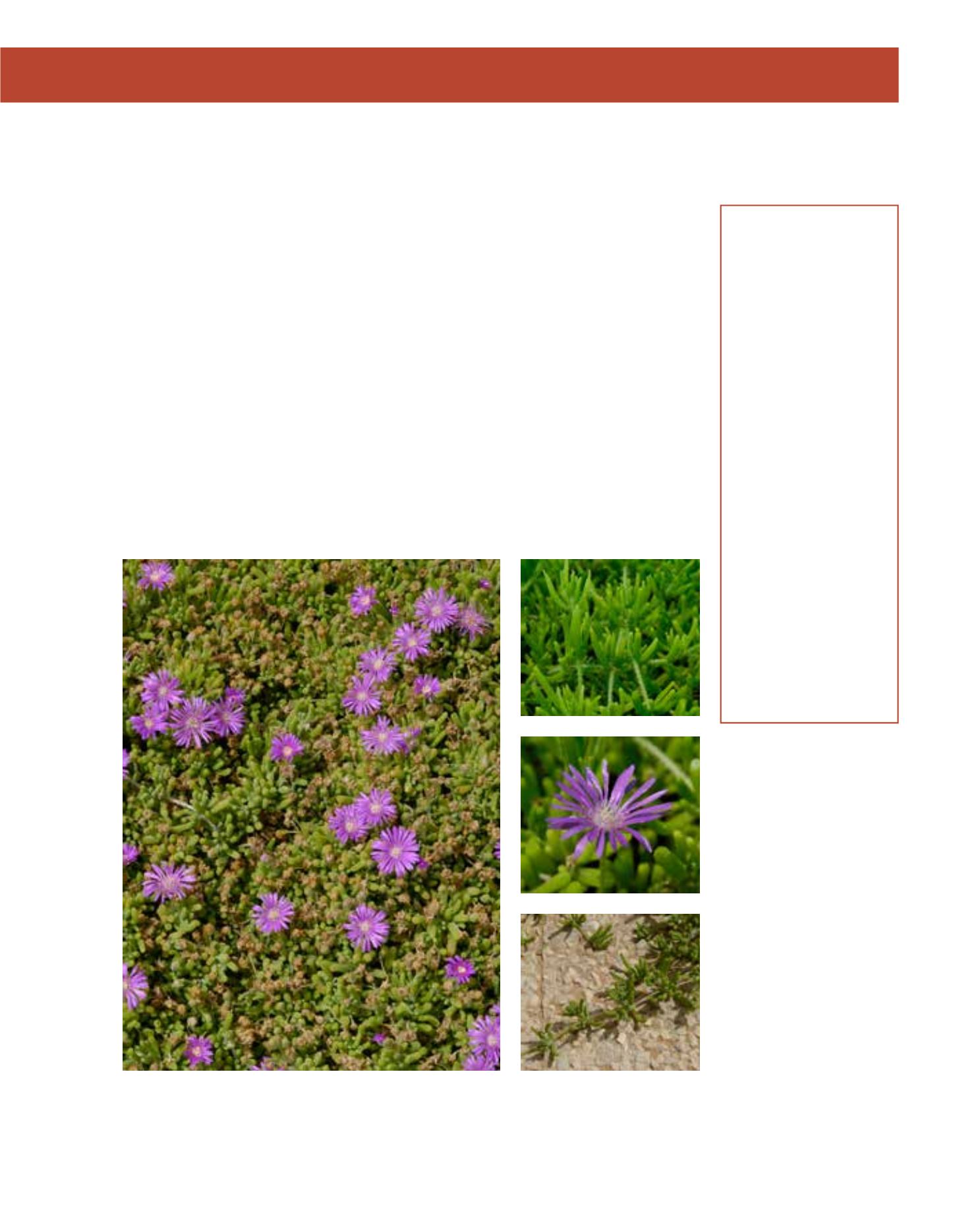

GENERAL
Origin
:
Mediterranean
Vigour
:
fast growing
Humidity
:
very arid, semi-
arid, semi-humid,
very humid
Propagation :
cuttings
Maintenance :
low
CONDITIONS
Urban climate :
resistant
Dessication :
resistant
Stagnant water :
vulnerable
Irrigation
:
medium
Salinity/ppm :
very high (7000
ppm)
Hardiness
:
-6°C
SHAPE
Type
:
sub-shrub
Height
:
0.2 m-0.6 m
Spread
:
0.5 m-1 m
Foliage
:
evergreen
FLOWER
Colour
:
pink
Size
:
3 cm
Period
:
April - June
FRUIT
Type of fruit :
capsule
Fruit size
:
0.2 cm
Toxicity
:
inedible
This mound-forming Rosea Ice Plant is native to South Africa and Namibia, which also makes a
resilient ground cover in Arriyadh. First, it forms a ground-hugging mat some 20 cm high that
eventually grows a centred bump of up to 60 cm high and 1 metre across. The grey-green foliage
and the stems feature papillae that look like dewdrops for which it was alternatively named Dew
Flower. Evergreen leaves are arranged oppositely and may reach 3 cm in length. Pink star-shaped
flowers with a diameter of 3 cm cover this succulent perennial in spring. This Ice Plant demands
well-drained soil, appreciates regular watering in summer and loves full sun. Light frost does
not show any damage, since this plant belongs to the hardiest genus amongst the iceplant family
(Aizoaceae, previously known as Mesembryanthemaceae). More than 100 species belong to the
genus Drosanthemum, but only a few are cultivated, of which this is the favourite. Most members
of this genus and even the entire family are called Ice Plants for the glittering surface of some
species’ leaves. Soils may be low in nutrients and high in salinity, but waterlogging is not tolera-
ted and will soon kill the plant. Sowing results in types that vary in flower colour ranging from
mauve to almost white, and this offspring may also have flowers 5 cm across. More often, Ice
Plants are propagated by cuttings. They look best trailing along rocky slopes and do not require
any maintenance if their growth conditions are met. Some shade is tolerated, but may reduce the
floral display.
130
Drosanthemum hispidum,
Aizoaceae
Rosea Ice Plant
















